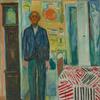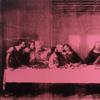Photographer Elizabeth Heyert Premieres 'The Idol' at Venice Art Biennale
- VENICE, Italy
- /
- April 08, 2019
New York-based photographer Elizabeth Heyert will premiere seven works from her new series, The Idol, at the Venice Biennale in May 2019. Selected as part of Personal Structures, a group exhibition curated by Global Art Affairs Foundation (GAA), a Dutch non-profit organization, and hosted by the European Cultural Centre (ECC), Heyert’s work will be shown at the historic Palazzo Mora.
The Idol is inspired by the problem of the representation of women, centered on the question: What makes a woman an idol, an object of fascination and worship? Heyert pairs visual artifacts from classic Hollywood with photographs of historical statues of the Virgin Mary. Mary was the starting point for this project, with her image perhaps the most ubiquitous in the western world. Traveling to cathedrals and churches throughout Southern Spain, such as the Cathedral of Malaga, the Cathedral of Marbella, and smaller churches in Seville, Granada, and surrounding towns, Heyert concentrated on capturing the exquisitely realistically-rendered faces, most dating from the seventeenth century. She discovered a remarkable similarity to recognizable mid-twentieth-century film stars, prompting the realization that the male fantasy of the archetypal woman seems to have remained unchanged over the course of many centuries.
By juxtaposing images of Mary with those of Hollywood stars, Heyert interrogates the Madonna-Whore dichotomy. Permeating both art history and, more broadly, visual culture as a whole, this dichotomy divides women into two opposite categories: the pure and virtuous and the depraved, sexualized and wicked. Heyert seeks to disrupt the impossible standard of the ideal embodied by Mary by stripping her of religious signifiers - her elaborate crown, rosary beads, the baby Jesus often seen in her arms - seeking to show her simply as a woman, rather than a religious icon.
The myth of the “bad” woman is captured in four film posters, showing Joan Bennett in The Woman on the Beach (1947), Diana Dors in The Unholy Wife (1957), Rita Hayworth in The Lady from Shanghai (1947), Elizabeth Taylor in Butterfield 8 (1960). The taglines scream of the danger of seductive, wicked women, with warnings like “I’m No Good” and “you know nothing about wickedness.” Additionally, the image of Marilyn Monroe in the 1962 LA Times announcement of her death, emphasizes how we can elevate the women we worship only to destroy them, and then love them even more once we no longer have them.
Heyert also created a diptych of a color photograph of Mary alongside a text in the style of a formal manuscript. On close inspection, this is revealed to be a list of hundreds of offensive words used to denigrate women, a provocative and timely reminder of the ways that women are often viewed and also treated in everyday life.
“I wanted to explore the idea of what it means to be a woman who is idealized and worshipped. Why do women try, against impossible odds, to live up to someone else’s vision of perfection? Most of all, why do we elevate the women we most admire to unattainable heights, and then demean or destroy them when it cannot be sustained?” Heyert comments.
The Idol is part of Personal Structures, an exhibition which includes the work of over one hundred and fifty international contemporary artists working on the topic of Time, Space and Existence. It is organized by the GAA Foundation and hosted by the European Cultural Centre in the center of Venice, at the Palazzo Bembo, the Palazzo Mora and the Giardini Marinaressa. The prestigious venues have over a decade long relationship to the Biennale, having shown the work of artists such as Yoko Ono, Lawrence Weiner, and Thomas Ruff.
The Palazzo Mora is situated in Sestiere Cannaregio, between the San Felice Church and Canale di Noale. Named for the Mora family, who was influential in Venice from the sixteenth through to the eighteenth centuries, the sixteenth-century facade now houses fifteen exhibition rooms with frescoed ceilings, a beautiful terrace facing the canal, and an entrance with a garden.
About Elizabeth Heyert
Born in New York, Elizabeth Heyert’s passion for photography led her to London, where she earned a Master’s degree at the Royal College of Art, studying closely with British photographer Bill Brandt. She later returned to New York where she developed a successful career as a photographer of architecture and interiors. After 20 years working with various clients such as Ralph Lauren, Cartier, American Express, and Tiffany & Co., along with snapping shots around the world for publications including The New York Times, New York Magazine, Vogue, Elle Decor, and Architectural Digest, Heyert closed her commercial studio in order to focus on fine art photography. Her work is represented in international public and private collections, including the Metropolitan Museum of Art, the San Francisco Museum of Modern Art, and the Getty.
More info: www.gaafoundation.org | www.europeanculturalcentre.eu















